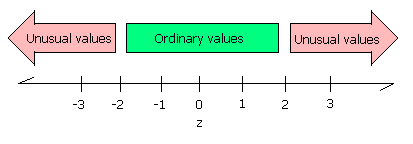Removing inline style attributes and other presentational markup
| taw mass/g |
|---|
| 20.33 |
| 19.85 |
| 20.12 |
| 20.52 |
| 20.35 |
| 20.12 |
| 20.78 |
| 19.30 |
| 19.24 |
| 18.46 |
This document is a vehicle for my own experimentation on implementing HTML5 without using inline style for small specific adjustments. The upshot is bloat in the stylesheet and style sheet commands that read .center {text-align:center}. Using a property as a class is a no-no, but that points out how ridiculous banning small specific inline style adjustments really are. What is <p> if not ultimately presentational? In the oldest greek scrolls there are no spaces between words, no periods, and no paragraphs. inotherwordstherearenopresentationalelementswhatsoever.
Specific notes
While h1 is fine on screen, when I print a quiz or test the h1 is too large. An @media print rule downsizes the h1, h2, and other header levels with a font-size:smaller command
Of late I have been using a italicized caption under images using the <em> element. There is a push by some to remove <em> as well as its sibling <strong> from a strict HTML5 as presentational. <em> and <strong> are functionally the present day equivalent of the earlier <b> and <i> tags that were recommended against even in HTML 4.01. This move to remove <em> and <strong> can also be seen as a counter-attack on those in the HTML5 working group that have brought <b> and <i> back to life in HTML5.
There is an accessibility reason to tossing <em> and <em>. Visually impaired users may find unitalicized text easier to read, but there would be no way for their user-based style sheet to override an HTML element.

Cumulonimbus at sunset
Although a CSS class construction could be used, a slicker implementation uses an attribute selector that selects hyphenated id's that begin with a common lead set of letters. Thus each image is named image-n where n is a number to make the id unique. This is applied to the paragaph holding the image.
In statistics the sample mean requires a bar above the variable, such as an . This is implemented using a class call. There is no UTF-8 character for this character in the fonts commonly found on computers on campus, and mathML cannot yet be rendered when embedded in HTML without using downloaded plugins such as MathPlayer. The other option is XHTML + MathML, but XHTML always feels like bringing out the big guns to kill a mosquito. And as it has to be served as text/html to display in many browsers, what's the point? HTML5 feels like the future, XHTML feels esoteric, the superior Betamax format that will sidelined by the more popular and practical VHS that is HTML5.
The rest of this document is a mish-mash of common constructs on the quizzes and tests I construct so often. These were simply borrowed to provide a test bed for the removal of inline CSS style via the style attribute. Ultimately I have cluttered the document with class and id attributes. My only true gain is that now I can "touch" a single line of CSS and impact all affected classes and id's in the document.
- ______________________ Identify the cloud type for the clouds outside the classroom today.
- ______________________ Find the sample mean x
- __________________ Last night I jogged from Dolihner down to the causeway and back. I ran a total of 6.19 km in 41 minutes and 14 seconds. What was my pace in minutes per kilometer?
-
 __________________ On my 6.19 km run in 41 minutes and 14 seconds, what was my average speed in meters per second?
__________________ On my 6.19 km run in 41 minutes and 14 seconds, what was my average speed in meters per second? - __________________ What device made the wave seen in the image?
- Define refraction in your own words.

Ivyleen and Renee make refraction measurements

